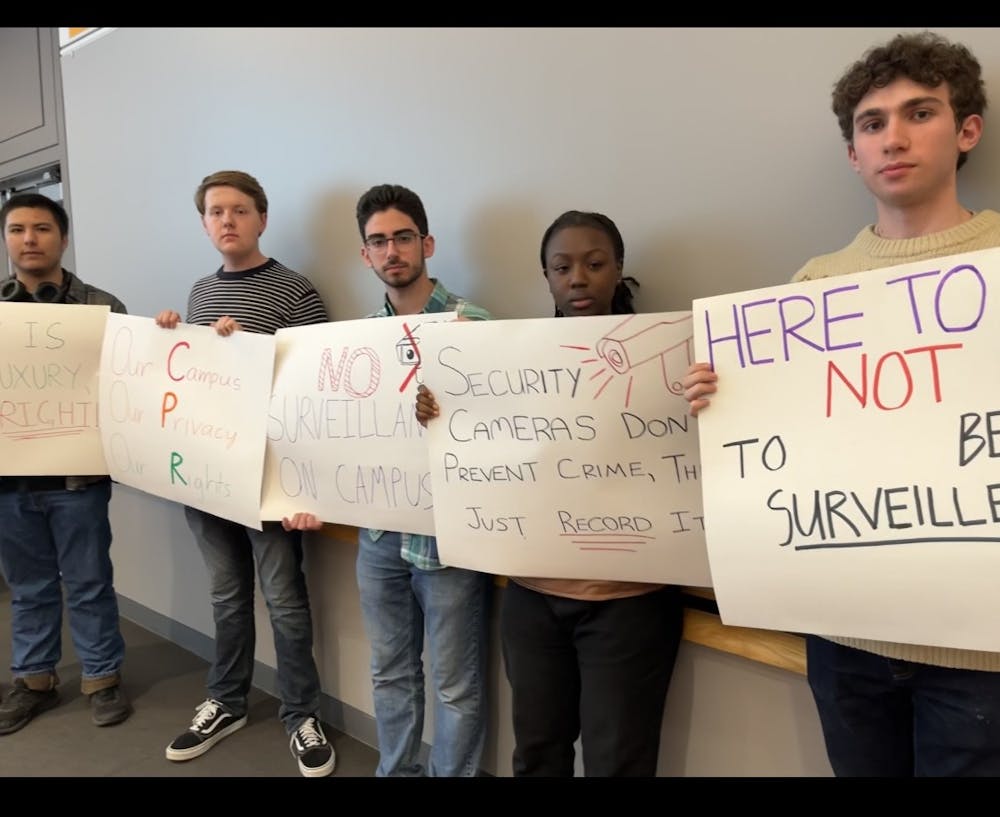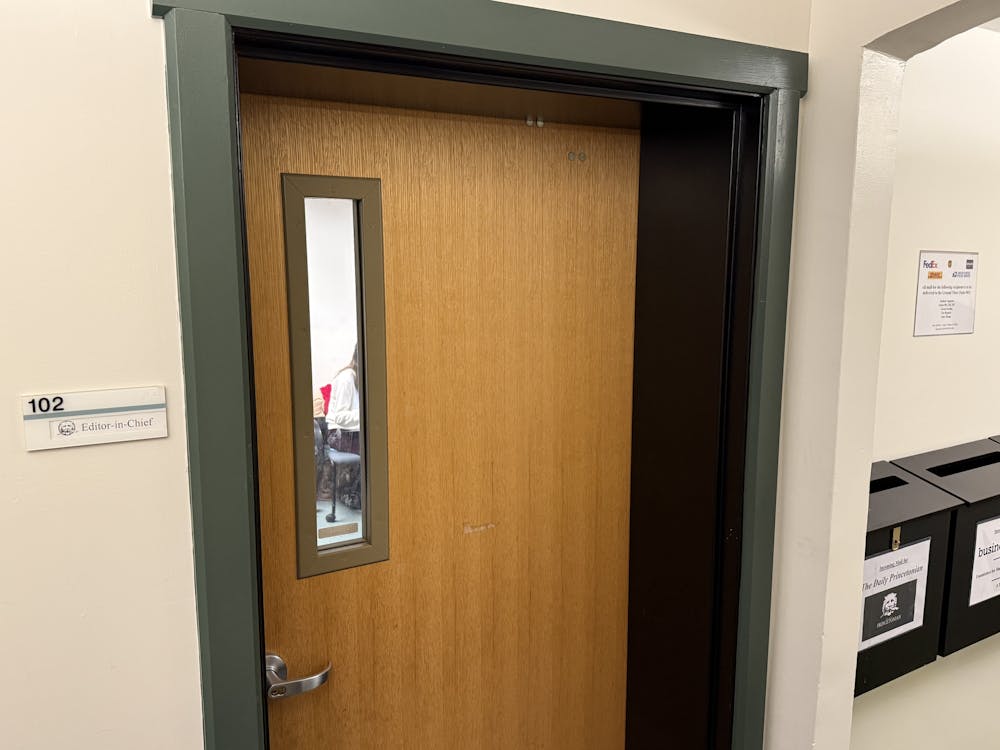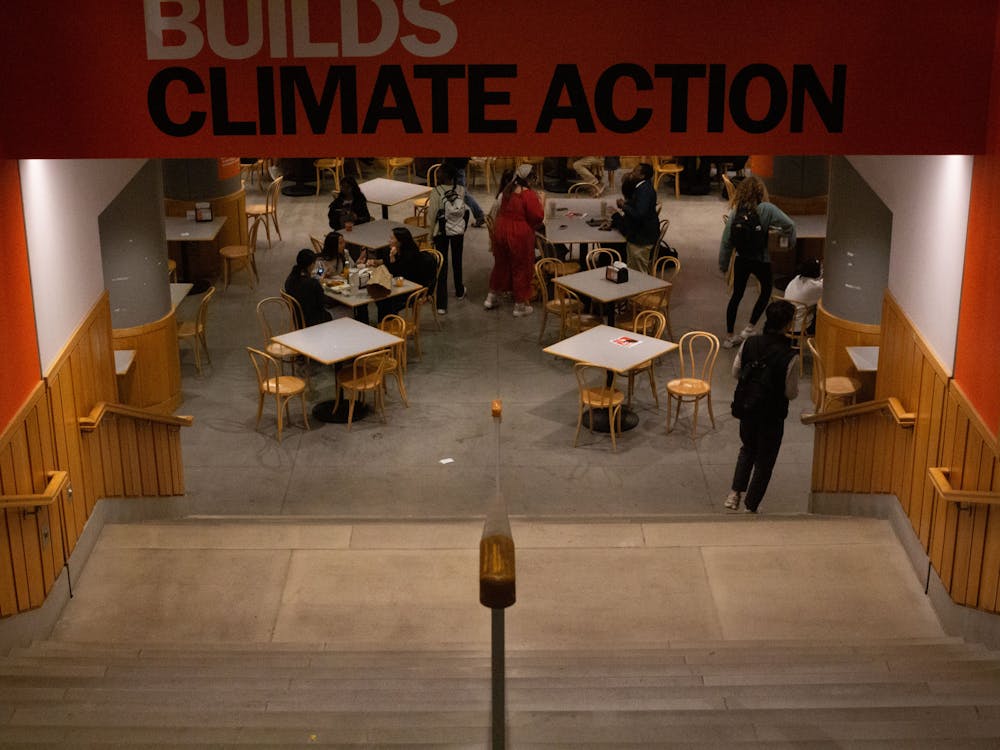The following is a guest contribution and reflects the author’s views alone. For information on how to submit an article to the Opinion Section, click here.
Recent events at Princeton and beyond have contributed to growing concern regarding public safety on campus. In particular, the initial ambiguity surrounding the tragic death of Misrach Ewunetie ’24 and the record number of school shootings in 2022, among other tragedies, have worried students and community members.
The recent expansion of security cameras on campus aims to address these concerns. While this policy is well-intentioned, security cameras do not always deter crime, are susceptible to abuse, and contribute to larger carceral systems that perpetuate inequality.
We, Students for Prison Education, Abolition, and Reform (SPEAR), are asking the University community to consider alternative strategies to promote everyone’s safety.
Overview
The expansion of cameras seems to go against at least some of the results of the November 2022 USG report “Undergraduate Student Perspectives: Security Cameras on Campus,” which reported that only 28 percent of students would feel safer or more comfortable with security cameras, while 58 percent said they would be negatively affected.
In light of this statistic, SPEAR is encouraging the University community to imagine what safety and security can look like beyond policing. Expanding lighting, for instance, is a policy that is broadly supported and uncontroversial. But instead of prioritizing expanding lighting across and around campus, the University has moved ahead with unpopular policies like increased surveillance at a rapid pace, ignoring student and stakeholder concerns.
Although Vice President for Campus Life W. Rochelle Calhoun noted during the March 27 meeting of the Council of the Princeton University Community (CPUC) that the Environmental, Safety, and Risk Management Committee (ESRM) is convening a working group on increasing lighting, we believe that this bureaucratic approach will yield little or slow progress. It is also worth noting that avenues for engagement with campus stakeholders were not prioritized in the context of the expansion of cameras. The University could have made a committee like they have done with lighting or included undergraduate (and even faculty) representatives on the ESRM. But they chose not to.
The case against security cameras
There is little evidence that security cameras are particularly effective. One study found that security cameras in countries like South Korea and Britain didn’t have an impact on violent crime. Additionally, as the ‘Prince’ has reported, crime on campus remains very low. Nevertheless, the University, according to its March 8 email, maintains that the cameras' “primary intended use is to help in emergency situations and post-incident investigations; the cameras will generally not be monitored in real-time.”
There is documented abuse of security cameras within the institutions entrusted with monitoring them. In London, audits showed that camera operators focused on women, including zooming in on intimate areas.
This abuse gives us reason to question the use of qualifiers such as “primary” and “generally.”

Even at the March 27 CPUC meeting, VP Calhoun would not guarantee that the cameras would not be used to pursue unrelated disciplinary actions during an emergency investigation. Additionally, the University has not conveyed any plan for oversight of their usage.
Student perspectives sidelined
The University has shown extensive disregard for student perspectives on the subject. Feedback sessions during the fall semester were scheduled during times which, in our experience, were inconvenient for many students. In fact, as Assistant Vice President of Public Safety Kenneth Strother mentioned during the USG Meeting on April 2, the Department of Public Safety’s plans to expand cameras had been in the works since June 2021 when Strother was hired with the goals of expanding the video program in mind.
During the March 27 CPUC meeting, which the March 8 announcement email said would provide community members with the chance to ask questions, President Christopher L. Eisgruber ’83, who was facilitating the meeting, did not call on student activists, instead taking questions only from CPUC members (comprised of select students, faculty members, alumni, and staff).
While VP Calhoun approached us after the meeting to say that we could send follow-up questions to her, it was deeply unfortunate that our concerns and answers could not be heard in that public forum — despite the previous promises of the email and assurances from Christine Gage, Associate Secretary in the Office of the President, to whom we emailed our questions prior to the meeting.
While VP Calhoun did say during the CPUC meeting that there will be avenues for feedback, there has been no public information about what those might look like. And the aforementioned disregard for student concerns leaves us nervous about camera expansion, lack of accountability, and the potential for institutional abuse of footage.
The potential for inequality
It is especially worrying for a university with a history of going so far as to use prox records in the context of Honor Code investigations to propose these plans. And we know that Honor Code violations disproportionately impact low-income, first-generation students. It is not then a leap of the imagination to see how these cameras may have a similarly disproportionate impact on low-income students on campus.
Research has shown that camera operators and systems also focus disproportionately on people of color. One study found that Black people were 1.5–2.5 times more likely to be surveilled than their percentage of the population. While cameras are apparently neutral pieces of technology, they often demonstrate systematic biases. We also know that policing and police systems disproportionately impact people of color. Princeton is not immune to these challenges either. The SPEAR working group Princeton Student Against Policing (PSAP) has documented some of these negative experiences in their handout exploring experiences with PSAFE and alternatives. During an open USG meeting on April 2, Assistant VP Strother and VP Calhoun discussed how “suspicious persons” reported would be investigated often using the new cameras. We know that bias can often play a big role in who is deemed suspicious, disproportionately men of color, for example.
Additionally, when it comes to their use during “emergency situations,” extensive camera systems haven’t always been effective. Take, for instance, this case study of the London terrorist attacks in 2007, which found that extensive camera systems are not only ineffective and expensive but also require employees for monitoring.
Expansion of Public Safety (PSAFE)
More security cameras likely speaks to an expansion of PSAFE, which we find deeply concerning and problematic. The University directing funds and attention towards policing is an affront to our calls for holistic care that addresses the particular impact of systems of oppression on low-income and students of color, such as expanding the services and capacity of Counseling and Psychological Services (CPS) or other programs that directly benefit student well-being.
The expansion of PSAFE, including through security cameras, is not a happenstance, but an intentional decision on the University’s part.
During one student feedback session, hosted by USG, on Nov. 21, Assistant VP Strother explained that with the expansion of the undergraduate student population and the construction of two new residential colleges, an expansion of PSAFE was natural.
We recognize and share concerns about our communal safety. But more policing and surveillance is not the solution. From the PSAFE show during orientation to their public relations officers, PSAFE makes us feel like they are the best and only option. But other forms of non-carceral safety exist, as long as we commit to them. Please join SPEAR in learning about, imagining, and working towards transformative justice and safety for all.
This opinion piece was written by members of Students for Prison Education, Abolition, and Reform, a Princeton University-based student organization that educates, advocates, and agitates against the carceral state on Princeton’s campus, in New Jersey, and beyond. Follow us on Instagram at @princetonspear. Questions about this piece can be directed to Alan Plotz at ap3169@princeton.edu.








